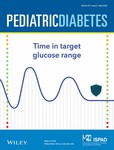Selecting an intervention to prevent ketoacidosis at diabetes diagnosis in children using a behavior change framework
Celia Laur and Rayzel Shulman are senior authors who contributed equally.
Funding information: MK received salary support for her participation in this project from the SickKids Summer Research (SSuRe) and Opportunity Summer Studentship. CL was funded by the Canadian Institutes of Health Research (CIHR), Health System Impact Fellowship (postdoctoral) while this work was conducted.
Abstract
Objective
The rate of diabetic ketoacidosis (DKA), a preventable, life-threatening complication of diabetes, at the time of diagnosis in children remains unacceptably high worldwide. We describe our initial approach to selecting a national DKA prevention strategy, to be implemented by the Canadian Pediatric Endocrine Group DKA Prevention Working Group, informed by a framework for behavior change interventions.
Methods
Existing interventions were identified from a systematic review and our own gray literature search. We then characterized interventions using the Behavior Change Wheel, a framework to inform and drive behavior change, and matched interventions to behavioral targets, audiences, and identified barriers and facilitators. Feedback from the CPEG DKA prevention working group was incorporated into the intervention plan.
Results
We identified 27 interventions. Our proposed target behaviors are: (1) prompt recognition of symptoms of diabetes in children; (2) urgent attendance to medical care with a request for an office-based test for diabetes; and (3) rapid confirmation of diagnosis and urgent consultation with pediatric diabetes experts. We initially identified four possible intervention functions including education, training, environment restructuring, and enablement. Feedback from the working group favored education intervention functions including symptom recognition messages targeting parents, caregivers, teachers, and providers and messages about how to make a rapid diagnosis and need for urgent referral targeting providers.
Conclusions
The Behavior Change Wheel has been used successfully in selecting interventions in other clinical areas. We describe how we used this framework to provide a foundation for developing an intervention to prevent DKA at diabetes diagnosis in children.
CONFLICT OF INTEREST
RS is the lead of the CPEG DKA working group and has received speaking fees from Dexcom. The authors have no other relevant conflicts of interest to disclose.
Open Research
DATA AVAILABILITY STATEMENT
The data that support the findings of this study are available from the corresponding author upon reasonable request.




